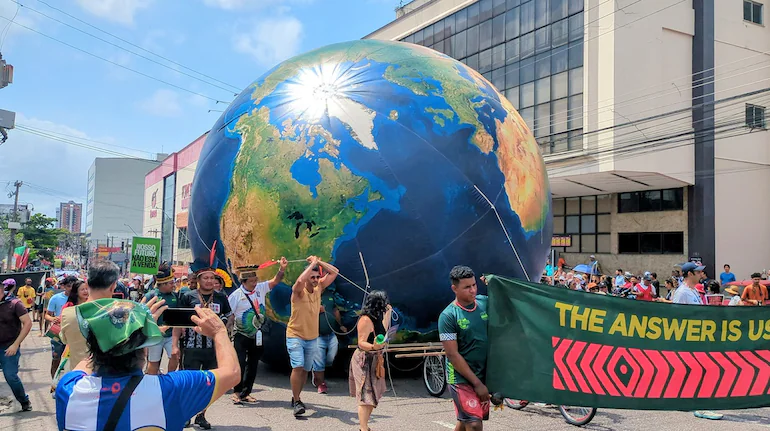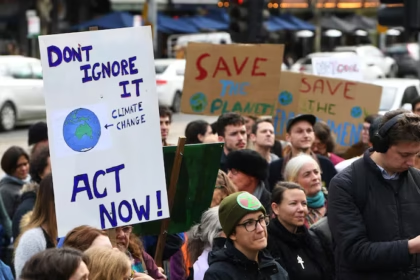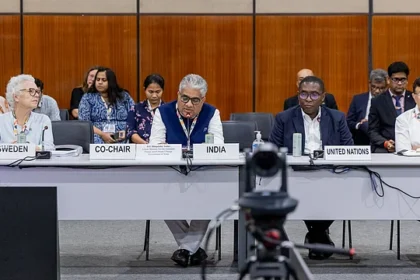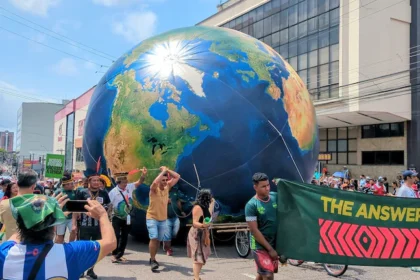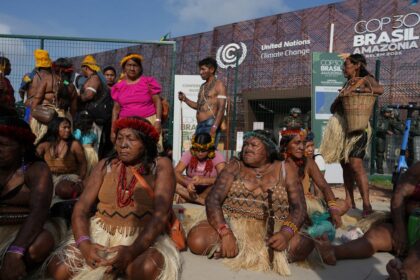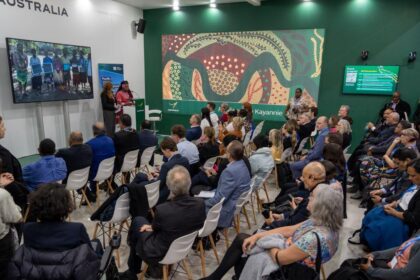The UN climate summit in Belém reached its midpoint with the hardest questions still unanswered. Negotiators spent the first week laying out positions on money, trade rules, and how to verify national promises. They made almost no progress on any of them.
The meeting is scheduled to end on November 21. That gives delegates just a few days to resolve disputes that have stymied climate talks for years. The stakes are clear. The world is warming faster than expected, and 2025 is on track to rank among the hottest years on record. Yet the process to respond to this crisis moved slowly.
Brazil’s President Luiz Inácio Lula da Silva framed the challenge in his opening address. “We are moving in the right direction but at the wrong speed,” he warned. UN Secretary-General António Guterres made a similar plea, telling delegates that “this COP must ignite a decade of acceleration and delivery.”
The gap between those words and what happened in negotiating rooms remained wide.
The $1.3 trillion question
The centrepiece of the summit is the Baku-to-Belém Roadmap, an ambitious plan to mobilize $1.3 trillion annually by 2035. The architects of the roadmap want to reform multilateral development banks, reduce debt burdens on vulnerable countries, and channel private capital toward climate investments at scale.
UN climate chief Simon Stiell put the issue plainly in his remarks. Climate finance is the “lifeblood of climate action,” he said, adding that money must flow faster and more predictably if developing nations are to make real progress.
The World Resources Institute called the roadmap “one of the most comprehensive attempts yet” to align global financial architecture with climate needs. But the organization warned that private investors rarely put money into adaptation work or disaster recovery. These areas generate no returns. Cities needing to stay afloat during increasing floods, farmers switching to drought-resistant crops, and communities relocating from disappearing coastlines need grants and concessions, not loans.
That creates a fundamental problem. The roadmap depends heavily on private capital to reach its target. But the most urgent needs in poor countries do not fit private investment models. No agreement emerged during the first week on how to fill this gap, or how much public money wealthy nations would commit.
The question of who pays remained unresolved. Developed nations argued that all countries with the capacity to contribute should do so. They pointed to rising emissions in large middle-income countries. Developing nations countered that rich countries bore historical responsibility for the crisis and must lead on finance. Neither side shifted.
Officials moved the finance negotiations into separate presidency consultations. That procedural step signalled how far apart the parties remained.
Trade tensions threaten progress
Another fight erupted over trade policy. Some wealthy nations want to use carbon border taxes and tariffs to pressure others into cutting emissions. The European Union has already implemented such measures. The United States is considering similar steps.
Developing countries see this differently. They argue that these policies amount to protectionism disguised as climate action. They worry that tariffs will lock them out of markets just as they try to build clean energy industries. Several delegations warned that trade disputes could derail the summit.
This issue was not on the agenda when negotiations began. It forced its way into discussions as countries realized that domestic climate policies increasingly overlap with international trade rules. No framework exists yet to manage these tensions. The first week produced no solutions.
Transparency became another flashpoint. Wealthy nations want strict systems to verify that all countries are meeting their climate commitments. They argue that without verification, the entire process loses credibility. They want detailed reporting on emissions, finance flows and progress toward national targets.
Developing nations worry about the administrative burden. Many lack the technical capacity to meet complex reporting requirements. They see verification demands as another way to shift attention from the finance they need to the paperwork they must produce. They want rich countries to be as transparent about the money they promise as they demand others be about emissions.
The debate reflects deeper questions about trust. Developing nations point out that wealthy countries have repeatedly failed to meet their own finance commitments. A promise made in 2009 to deliver $100 billion per year by 2020 was not met on time. Now negotiators are discussing trillions. Many poor countries want guarantees before they accept stricter verification rules.
National plans fall short
Assessments released before the summit made uncomfortable reading. The World Resources Institute’s State of Climate Action 2025 report found that no major economic sector is changing fast enough to limit warming to safer levels. Power generation, transportation, industry and agriculture, all lag behind what is needed.
Other research showed that current national climate plans would still lead to dangerous levels of warming. Even if every country kept every promise, the world would overshoot temperature targets.
Countries are supposed to submit new and stronger national plans next year. These plans will shape climate action for the next decade. But no consensus formed during the first week on how to review these plans or what standards they should meet. Some nations want binding commitments. Others want flexibility to adjust based on their circumstances.
The problem is part political and part technical. Wealthy nations that built their economies on fossil fuels want developing nations to cut emissions faster. Developing nations say they cannot do that without the technology and money that rich countries control. This standoff has persisted for years.
Loss and damage stuck in neutral
Negotiators also made little headway on loss and damage. This refers to climate impacts that cannot be avoided or adapted to. Severe storms rushing in from seas. Extreme rainfall ruining harvests in hours. Heat waves that kill crops and people.
A fund has been created to help countries cope with these losses. But making it operational is proving difficult. Vulnerable nations want the fund to be easy to access and large enough to matter. They want guaranteed contributions from wealthy nations. They want decisions about who gets help to be made quickly.
Donor countries want to move more cautiously. They worry about open-ended commitments. They want to see how the fund operates before committing large sums. They prefer a system where countries apply for help and are assessed case by case. No mechanism emerged during the first week to bridge these differences.
Outside groups raised concerns about who had access to the negotiations. Several organizations pointed out that hundreds of fossil fuel lobbyists registered for the summit. They argued that oil and gas interests were working to weaken any agreement that would accelerate the energy transition.
Indigenous groups faced different obstacles. Despite record numbers seeking to participate, only a small fraction gained access to decision-making spaces, according to reports. These communities often live on the frontlines of climate impacts. They argue their exclusion undermines the legitimacy of any agreement reached.
Modest gains
A few positive developments emerged. A new group of finance ministers launched an initiative to explore innovative funding mechanisms. Major development banks issued a joint statement pledging better coordination on climate investments. Several countries indicated willingness to consider longer-term funding commitments that would provide more certainty.
These were signals of intent rather than concrete agreements. No one committed specific dollar amounts. No new mechanisms were finalized. No breakthrough occurred on making finance more accessible.
The final week will determine whether this summit delivers substance or just more statements. Three outcomes matter most to markets and policymakers watching from outside.
First, negotiators must establish a credible pathway to $1.3 trillion in annual climate finance. That means specifying how much will come from public budgets, how much from private sources, and what reforms will unlock both. Without clarity on these questions, the roadmap remains an aspiration.
Second, countries must resolve the trade tensions before they poison broader cooperation. Climate policies and trade rules will increasingly intersect. A framework to manage that intersection is needed now.
Third, delegates must create functioning systems for transparency and loss and damage. These are not just technical issues. They determine whether vulnerable countries trust the process enough to make ambitious commitments in their national plans.
The odds of achieving all three look slim at the midpoint. The first week revealed how deep the divisions run. The remaining days may not be enough to bridge them.

